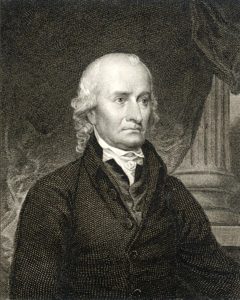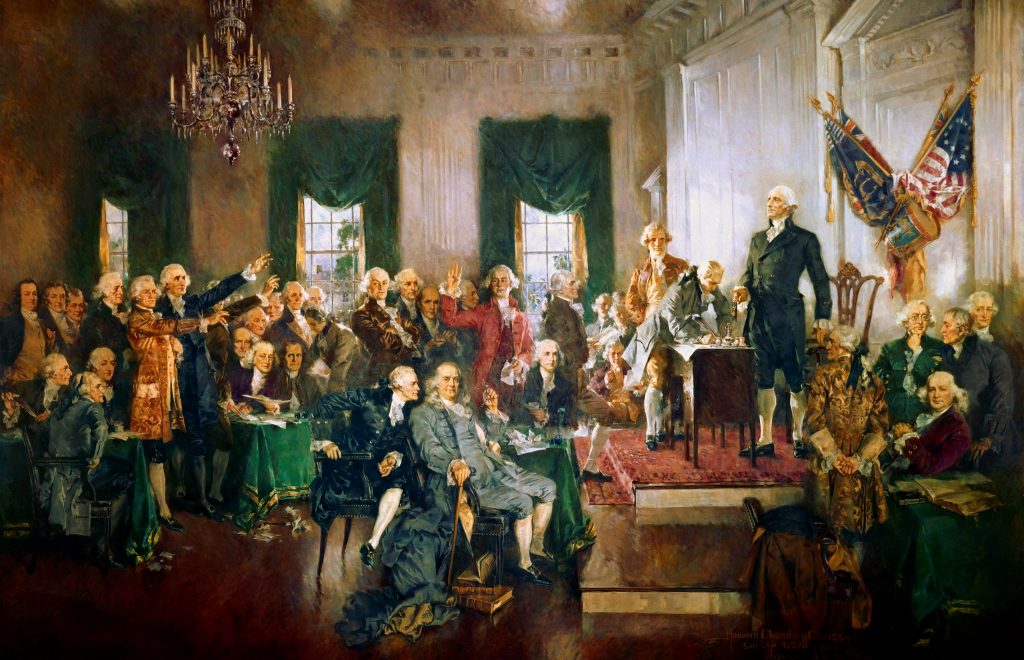Edenton was home to several colonial-era leaders with many talents, such as:
- A delegate to the Constitutional Convention from North Carolina and one of 39 signers of United States Constitution in 1787, exactly 200 years after the “Lost Colony” disappeared at Manteo;
- Author, in 1770, of one of the first books on climate change: (Observations on the Climate in Different Parts of America, Compared With the Climate in Corresponding Parts of the Other Continent: To Which Are …);
- Was ordained a Presbyterian Minister;
- Studied medicine at Edinburgh, London, and earned his MD from the Univ. of Utrecht, Netherland and practiced medicine in Edenton, NC and served as the Surgeon General of the NC Militia during the Revolutionary War;
- Was a member of American Philosophical Society with Benjamin Franklin;
- Wrote “An Essay on Comets” for which he was awarded the Doctorate of Law degree by University of Leyden;
- Happened to be in Boston on his way to London when he witnessed the Boston Tea Party. Immediately afterward, John Hancock – the wealthy ship owner and statesman from Massachusetts – put him on one of his fastest ships to report news of the event to King George III and the Privy Court, which he did warning that repression would lead to revolution;
- During the Revolutionary War he went behind enemy lines to care for the wounded and also convinced the British to inoculate against smallpox;
- His speech, “Remarks on New Plan of Government” promoting ratification of draft Constitution was distributed around the nation and a version delivered on the steps of the still standing 1767 Historic Courthouse at Edenton convinced NC to endorse the new Constitution, with a Bill of Rights, even after the state had initially declined to do so;
- Served as the first Sec. Board of Trustees of University of NC, America’s first State University;
- Named trustee NY College of Physicians, Founder of NY’s Literary and Philosophical Society; and
- Authored “History of North Carolina”, which was published in 1812.
The amazing thing about this list is that one man, Hugh Williamson, possessed all of these attributes. He may well be the “most fascinating founding father forgotten by history”, according to Dr. George Sheldon. Sheldon, like Williamson, a recognized leader in medicine and professor of surgery and social medicine in the School of Medicine, produced a remedy for the historic slight with his 2009 biography, “Hugh Williamson: Physician, Patriot and Founding Father.”
 As reported in the University Gazette, Vol. 35, No. 8 story about Dr. Sheldon: “In 1774, Williamson co-wrote with (Benjamin) Franklin and Hunter a paper on the electric eel that was presented to the Royal Society of London, a learned society for science founded in 1660 by King Charles II.
As reported in the University Gazette, Vol. 35, No. 8 story about Dr. Sheldon: “In 1774, Williamson co-wrote with (Benjamin) Franklin and Hunter a paper on the electric eel that was presented to the Royal Society of London, a learned society for science founded in 1660 by King Charles II.
Just two years later, Franklin endorsed the false charge that Williamson was a British spy. The charge, leveled in a letter by Silas Deane, the first official envoy to France from the Continental Congress, was made as Williamson returned to the colonies that October.
Off the Delaware coast, Williamson’s ship was captured by the British. Williamson managed to escape by rowboat and make his way to the Continental Congress where he applied for, but was denied, a military commission because of the charge that he was a spy. Under this cloud of suspicion, Williamson left for Charleston, S.C., to join his brother in the business of shipbuilding and commercial trading.
Williamson planned to center his commercial operations in Philadelphia, but a British blockade in the Chesapeake Bay forced him to dock his ship in the port of Edenton off the North Carolina coast.
For whatever reason, Sheldon said, Williamson stayed in the Tar Heel state – and remained loyal to the cause of independence. In a 1778 letter, Williamson chafed at the question of his loyalty: “There was not in America a man who served it more faithfully or disinterestedly.”
The Gazette goes on to report: “That service to country found deep and multifaceted expression in Williamson’s adopted home of North Carolina from 1777 to 1793, Sheldon said.
In 1779, a year after affirming his loyalty to the colonies by signing the Book of Allegiance in Edenton, Williamson was appointed surgeon general of the North Carolina Revolutionary War militia. As an army surgeon, he recommended inoculation against smallpox for civilians and military troops before they entered active service.
In 1782, Williamson returned to Edenton and was elected to the N.C. House of Commons. In 1787, the governor appointed Williamson to serve as a delegate to the Constitutional Convention. And on Sept. 17, 1787, he was one of the 39 delegates (out of the 55 delegates in attendance) who signed the United States Constitution in the city where a decade earlier he had been accused of being a Tory spy. “

In the famous Howard Chandler Christy painting of the signing of the Constitution, Hugh Williamson is directly in front of the desk with one foot on the first step of the dais. He is wearing a brown coat and looking directly at General Washington.
As noted by American History (http://www.let.rug.nl/usa/biographies/hugh-williamson/): Williamson, after attending preparatory schools he entered the first class of the College of Philadelphia (later part of the University of Pennsylvania) and took his degree in 1757. He then trained for the ministry, and became a licensed Presbyterian preacher but was never ordained. He taught mathematics at his alma mater before studying, in 1764, medicine, eventually obtaining a degree from the University of Utrecht. In 1768 he became a member of the American Philosophical Society. The next year, he served on a commission that observed the transits of Venus and Mercury. In 1771 he wrote An Essay on Comets, in which he advanced several original ideas. As a result, the University of Leyden awarded him an LL.D. degree.
Williamson also authored, in 1770, of one of the first books on climate change, (Observations on the Climate in Different Parts of America…)
Williamson witnessed the Boston Tea Party as he departed for London where he then reported on the uprising to the Privy Council. He warned the Crown that harsh reactions would lead to revolution, as it did.
The term polymath is frequently linked to Williamson and a review of his contributions to knowledge as well as his leadership illustrates the accuracy of the term in his case. See the chronological listing below to understand that point:
Timeline Hugh Williamson – Expanded
- 1735 Born in Pennsylvania of Scotch-Irish descendent. Parents hoping, he would become a Presbyterian Minister. Attended first class of the College of Pennsylvania, later made part of Univ. of Pennsylvania.
- 1757/60 College of Philadelphia, Master’s Degree in Mathematics, Professor of Mathematics
- 1762 Studies Theology – Licensed as Presbyterian Minister
- 1764/68 Studies Medicine at Edinburgh, London, obtains degree from Univ. of Utrecht, Netherlands. Returns to Philadelphia.
- 1768 Becomes member of American Philosophical Society with Benjamin Franklin and John Bartram, among other notables.
- 1770 Wrote paper on Climate Change suggesting that clearing land of trees let to global warming
- 1771 Wrote “An Essay on Comets” for which he was awarded Doctorate of Law degree by University of Leyden, oldest university in the Netherlands.
- 1773 In route to England witnesses Boston Tea Party. In London summoned to Privy Council to testify on this act of rebellion. Testifies, “Repression would provoke rebellion”
- 1775 Develops a successful company importing medicines from West Indies, Indies, Martinique and America’s coastline.
- 1777 Arrives in Edenton, NC, eluding British blockades. Signs “Book of Allegiance” to Cause of Independence. Operates his trading company through Roanoke Inlet.
- 1779 Appointed Surgeon General NC Militia. Required inoculation against smallpox, many lives saved.
- 1780 Went behind enemy lines to treat Americans wounded in Battle of Camden. Convinced British to inoculate against smallpox.
- 1782/88 Elected NC House of Commons. Continental Congress 1782-88, NC delegate to Constitutional Convention, and in
- 1787 was one of 39 signers of United States Constitution.
- 1788 Published Speech, “Remarks on New Plan of Government” promoting ratification of Constitution and made key speech on the steps of the 1767 Courthouse at Edenton that convinced the state to ratify the new Constitution after it first refused to take action.
- 1789/01 Member of the University of NC board and first Secretary of the Board of Trustees of America’s first State University.
- 1790‘s Named trustee NY College of Physicians, Founder of NY’s Literary and Philosophical Society.
- 1812 Authored, “History of North Carolina”
- 1819 Died on May 22, age 83 in New York, buried in Trinity Courtyard.
This is a very good PowerPoint on Williamson’s life, assembled by Chris Grimes of the Albemarle Chapter of the Sons of the American Revolution:
Hugh Williamson per grimes.ppt
For a printable .pdf of this page, click here:
(1) Barker House
(3) Joseph Hewes & 1778 Cannons
(6) 1767 Chowan County Courthouse (no QR code on pedestal sign)
(7) Old Jail
(8) Oldest House in North Carolina
(10) 1800/1827 James Iredell House (no QR code on pedestal sign)
(11) Kadesh Church
(13) 1758 Cupola House
(15) 1886 Roanoke River Lighthouse (no QR code on pedestal sign)
